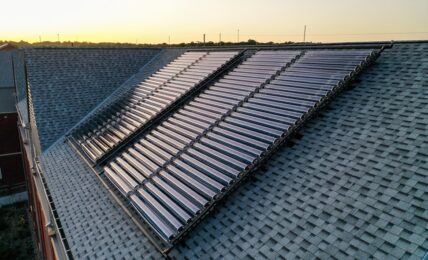The European Commission unveiled a new series of proposed measures aimed at improving the efficiency and sustainability of the freight transport sector, including the introduction of rules aimed at accelerating the shift to electric heavy duty vehicles, attracting more freight shipping to rail, and helping shipping companies to communicate their carbon footprint.
The new measures form part of the EU’s strategy to decarbonize the transport sector, as part of the European Green Deal, the EU plan to transform the region into a modern, resource-efficient and competitive economy and achieve climate neutrality by 2050.
The EU’s climate strategy includes a goal to cut transport emissions by 90% by 2050. Freight is responsible for around 30% of transport emissions, which are expected to grow by 50% by 2050 without putting in place decarbonization measures, according to the Commission. Around 53% of freight in the EU is carried by road.
The new regulations announced by the Commission include a proposal to revise the EU’s Weights and Dimensions Directive, which sets the maximum weight length, width and height for heavy-duty vehicles, to allow additional weight for vehicles using zero-emission technologies, which typically increase vehicle weight. According to the Commission, the revision would help incentivize the take-up of cleaner vehicles, and enable zero-emission vehicles to benefit from carrying additional payloads as technology develops and becomes lighter.
The proposals also include measures to optimize the use of rail transport, including improving cross-border coordination, increased punctuality and reliability, in order to attract more freight companies to rail, which only currently carries roughly 12% of goods transported between EU countries. The new proposal includes incentives for infrastructure managers and rail undertakings aimed at better coordinating the use of railway infrastructure capacity in the single European railway area, and move away from the current fragmented approach, which often leads to border delays.
The Commission also proposed a common approach for shipping companies to calculate their greenhouse gas emissions, based on the new ISO/CEN standard, enabling companies to communicate their emissions footprint on a standardized, comparable basis to shippers.
Frans Timmermans, Executive Vice-President for the European Green Deal, said:
“With today’s proposals, we take another step on the journey to sustainable transport. Every day, billions of goods are traveling on European roads and railway tracks, from harbours and customs points to shops and to our homes. Our proposals will help to get more zero-emission trucks on the road and make sure that this freight is handled in the most sustainable way possible, whether it travels by truck, train or barge.”
The post EU Unveils New Regulations to Decarbonize Freight Transport first appeared on ESG Today.
The post EU Unveils New Regulations to Decarbonize Freight Transport appeared first on ESG Today.


